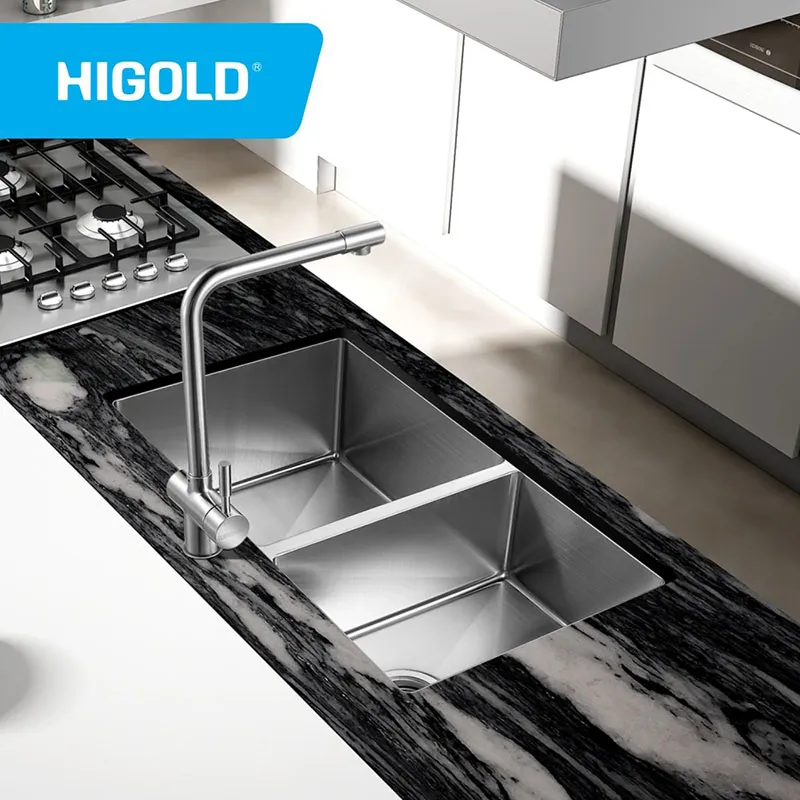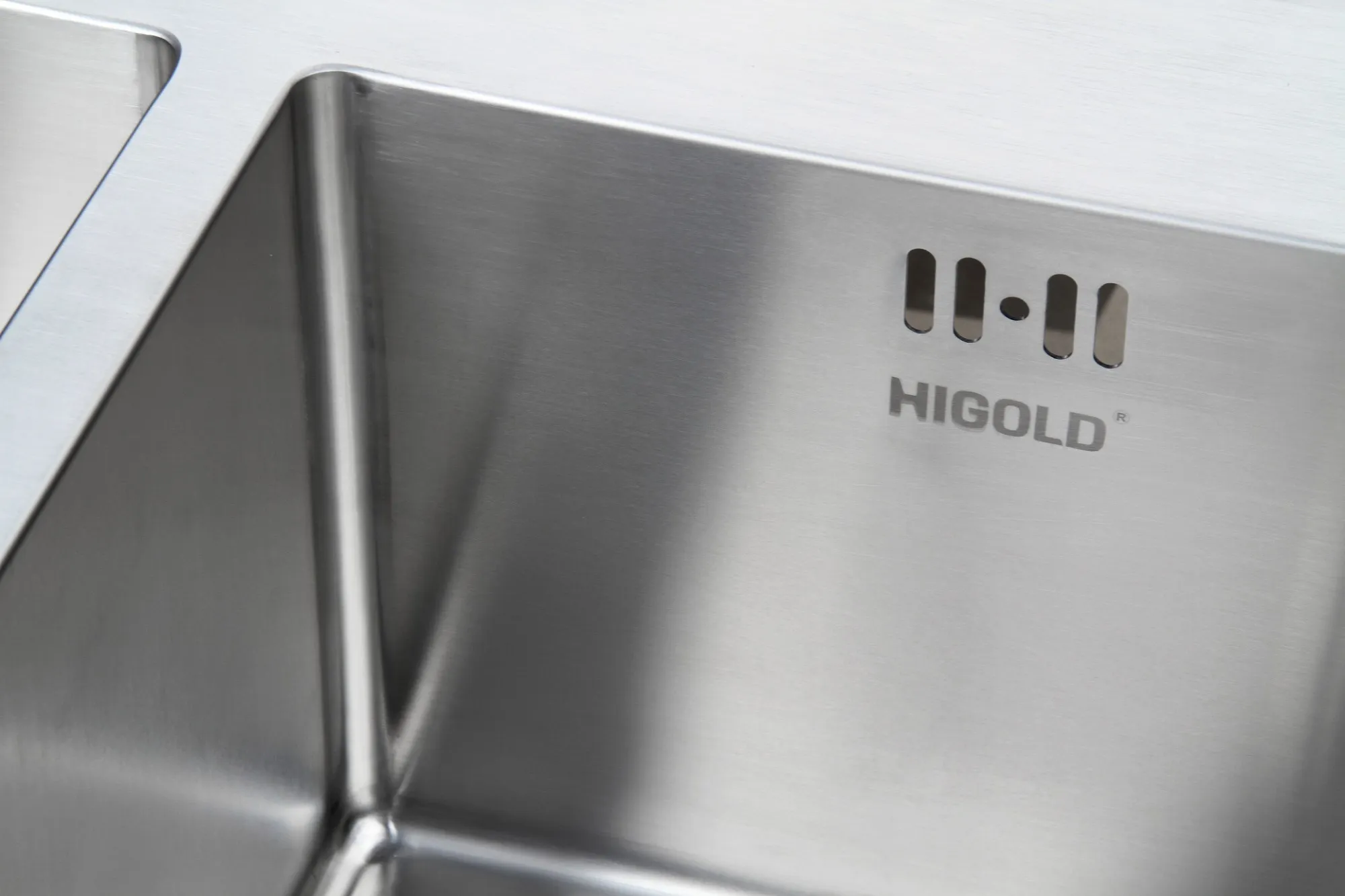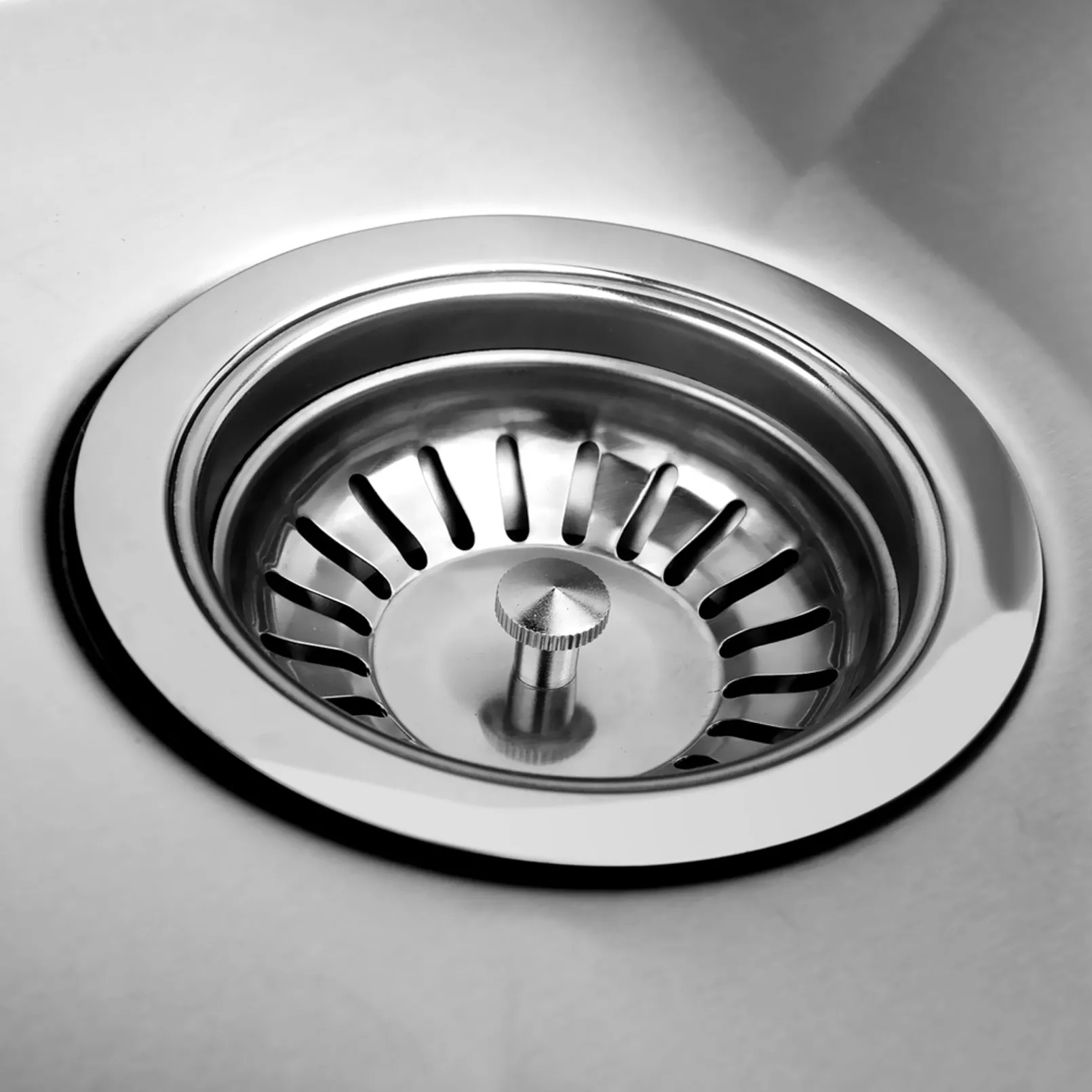The kitchen sink is one of the most common facilities in every family kitchen. It not only bears the heavy responsibility of daily washing dishes and ingredients, but also often comes into direct contact with water and moisture. Undermount kitchen sinks have been widely used in modern family kitchens because of their simplicity, beauty, and ease of cleaning. However, despite the many advantages of undermount kitchen sinks, they also have certain disadvantages, especially in the long-term use process, they are prone to mold.
When the undermount kitchen sink is installed, the edge of the sink is covered by the bottom of the countertop. This design, while improving the aesthetics, may also lead to a humid environment where the edge of the sink contacts the countertop. Due to the lack of effective ventilation and the accumulation of moisture, this environment is very prone to mold growth, especially in a humid kitchen environment, the problem of mold growth around the sink is more prominent. Sink mold not only affects the hygiene of the kitchen, but may also pose a potential threat to health, so preventing undermount kitchen sink mold has become a focus of attention for many families.
This article will start from the characteristics of undermount kitchen sinks, explore the causes of mold in sinks, analyze the conditions for mold growth, and propose effective prevention and solution measures to help consumers better manage and maintain kitchen sinks and ensure the hygiene and safety of the kitchen environment.

What are the characteristics of undermount kitchen sinks?
The biggest difference between undermount kitchen sinks and countertop sinks is their installation method. The edge of the sink of an undermount kitchen sink is hidden under the countertop, forming an almost seamless connection between the countertop and the sink. This design not only improves the aesthetics of the kitchen, but also increases the available space on the countertop. However, this design also provides a breeding ground for mold in the sink.
1. Installation method and sealing
The seal between the edge of the sink and the countertop of an undermount kitchen sink is usually made of silicone or other sealing materials to prevent moisture from penetrating between the sink and the countertop through the gap. Although this design looks simple and neat, due to the strong sealing under the countertop, once moisture accumulates, it is difficult to dissipate, thus providing conditions for the growth of mold.
2. Difficulty in cleaning undermount kitchen sinks
Undermount kitchen sinks are relatively difficult to clean, especially the edge where the sink contacts the countertop. Since the joints between the sink and the countertop are not easy to clean, and these parts are relatively hidden, it is easy to accumulate dirt such as scale and food residues. These dirt provide nutrients and moisture conditions for the growth of mold when they are stored for a long time.

What are the reasons for mold in undermount kitchen sinks?
The phenomenon of mold in undermount kitchen sinks is not an isolated case, but is closely related to its unique design and use environment. In order to effectively prevent the sink from getting moldy, we first need to understand the root cause of mold.
1. Humid environment
The kitchen itself is a humid environment. Especially during cooking and washing, water vapor and water droplets will diffuse in the air at any time, increasing the indoor humidity. After the undermount kitchen sink is installed, the sealing layer between the sink and the countertop usually forms a relatively closed space. It is difficult for moisture to evaporate and discharge quickly in this space, which easily leads to moisture accumulation. The growth of mold depends on a humid environment, especially in such places that are not easy to dry, the growth rate of mold is accelerated.
2. Poor sealing and drainage design
The installation of undermount kitchen sinks relies on a strong seal of silicone or sealing strips to prevent moisture from seeping under the countertop. Although these sealing materials perform well in terms of waterproofing, if the seal is not tight, moisture will penetrate between the sink and the countertop, creating a long-term humid environment. If the sink drainage system is not designed properly and the drainage is not smooth, moisture will easily accumulate on the countertop and the edge of the sink, further exacerbating mold growth.
3. Untimely cleaning
Because the edges and gaps of undermount kitchen sinks are not easy to clean, many families may ignore these areas that are prone to dirt and grime in daily use. If the scale, oil and food residue around the sink are not cleaned in time, they will provide sufficient nutrients for mold. Over time, the accumulation of these dirt and moisture creates ideal conditions for mold to grow.
4. Choice of countertop material
Some countertop materials (such as wood, composite materials, etc.) are relatively absorbent and easy to accumulate moisture. When the sink is installed on a countertop made of these materials, if the moisture fails to evaporate in time, the moisture will be absorbed by the countertop, further aggravating the environmental conditions for mold growth. In contrast, countertops such as marble and granite that are not easy to absorb water rarely have this problem.

How to prevent undermount kitchen sinks from getting moldy?
After understanding the reasons for the moldy undermount kitchen sink, we can take some practical measures to prevent the growth of mold and ensure the cleanliness and hygiene of the sink and kitchen.
1. Maintain good ventilation
Ventilation is the key to preventing mold in kitchen sinks. Moisture and moisture can easily accumulate in the kitchen, so it is crucial to keep the kitchen well ventilated. Installing exhaust fans and opening windows for ventilation regularly can effectively reduce the humidity in the kitchen, thereby reducing the conditions for mold growth. Especially after cooking, try to open the windows or start the exhaust fans to help discharge moisture inside the kitchen.
2. Check the sealing layer regularly
Since the sealing strip of the undermount kitchen sink is directly related to the waterproof performance of the sink, regularly checking whether the sealing layer is intact is an important measure to prevent the sink from getting moldy. Check whether the sealing strip is aging or damaged, and replace or repair it in time to prevent moisture from seeping between the sink and the countertop. If the seal is found to be loose, it must be repaired in time to prevent moisture accumulation.
3. Clean the sink and surrounding area in time
In order to prevent the sink from mold, keeping the sink clean is a vital step. After using the sink every day, you should wipe off the water stains on the sink and countertop in time. Especially the edge part where the sink contacts the countertop is prone to accumulate scale and oil, and must be cleaned regularly. You can use a mild detergent, vinegar water or professional kitchen cleaning products for cleaning, and avoid using too strong chemical detergents to avoid damaging the sink and countertop.
4. Use mildew inhibitors
There are some products on the market that are specifically used for mildew prevention, such as mildew spray or mildew inhibitors, which can help reduce the growth of mildew. Regular use of these products around the sink will help keep the sink and countertop dry and inhibit the growth of mildew. When using, you should pay attention to choosing mildew prevention products that are non-toxic and non-irritating to ensure the health of family members.
5. Keep the sink dry
The moisture in the sink needs to be discharged in time after use. Avoid leaving water around the sink for a long time, especially at the edge and joints of the sink. If water accumulates at the edge of the sink for a long time, mold will easily grow. After using the sink, it is best to wipe the edge of the sink with a clean towel or paper towel to keep a dry environment.
6. Regular deep cleaning
In addition to daily cleaning, regular deep cleaning is also an important step to prevent mold growth. A thorough cleaning can be performed once a month to clean the dirt, oil and scale at the joints between the sink and the countertop. In addition, some mold removal products can be used to completely remove mold and mildew to prevent them from continuing to grow.

Can I Rely on Higold for Reliable Kitchen Hardware Solutions?
Yes, Higold is a trusted supplier of high-quality kitchen products, specializing in both customized and ready-made kitchen sinks and faucets. Our products are designed to meet the diverse needs of homeowners, contractors, and commercial projects. Buy from us today for top-quality products at competitive prices.


